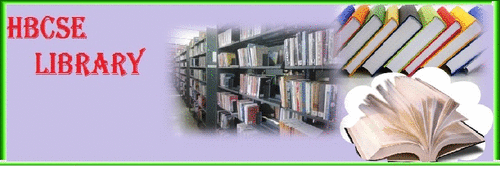1-15 September 2020
Blended Learning Designs in STEM Higher Education/Christopher N. Allan; Chris Campbell; Julie Crough, ISBN 9789811369827
This book offers a set of learning principles to support the design of rich learning experiences in Science, Technology, Engineering and Mathematics (STEM) higher education, including detailed evaluations and discussions for a variety of science subjects. Further, it presents a professional learning framework that can be used to support the implementation of blended learning technologies to increase buy-in from academic staff, to support grass roots initiatives, to develop a sense of community, and to sustain change. The principles developed here will help readers to think about blended learning from a learner’s perspective, put learning first, and develop activities that will help learners achieve better learning outcomes.
Creating Project-Based STEM Environments: The REAL Way /Jennifer Wilhelm; Ronald Wilhelm; Merryn Cole ISBN 9783030049522
This book models project-based environments that are intentionally designed around the United States Common Core State Standards (CCSS, 2010) for Mathematics, the Next Generation Science Standards (NGSS Lead States, 2013) for Science, and the National Educational Technology Standards (ISTE, 2008). The primary purpose of this book is to reveal how middle school STEM classrooms can be purposefully designed for 21st Century learners and provide evidence regarding how situated learning experiences will result in more advanced learning. This Project-Based Instruction (PBI) resource illustrates how to design and implement interdisciplinary project-based units based on the REAL (Realistic Explorations in Astronomical Learning – Unit 1) and CREATES (Chemical Reactions Engineered to Address Thermal Energy Situations – Unit 2). The content of the book details these two PBI units with authentic student work, explanations and research behind each lesson (including misconceptions students might hold regarding STEM content), pre/post research results of unit implementation with over 40 teachers and thousands of students. In addition to these two units, there are chapters describing how to design one’s own research-based PBI units incorporating teacher commentaries regarding strategies, obstacles overcome, and successes as they designed and implemented their PBI units for the first time after learning how to create PBI STEM Environments the “REAL” way.
Asia-Pacific STEM Teaching Practices: From Theoretical Frameworks to Practices / Ying-Shao Hsu; Yi-Fen Yeh ISBN 9789811507687
This book offers various perspectives on the complex and crosscutting concepts of the science, technology, engineering, and mathematics (STEM) disciplines in the classroom context. Presenting empirical studies, it reveals how researchers in the Asia-Pacific Region planned and implemented STEM education in the classroom. Further, it discusses the assessment of STEM learning to clarify what important elements should be included and how researchers and educators frame and design assessment tools. The book consists of four parts: potential and trends in STEM education; teachers’ practical knowledge for STEM teaching; STEM teaching practices; and assessment of STEM learning. Providing evidence on developing curriculums, implementing instructional practices and educating classroom teachers, it is intended for readers wanting to explore STEM education from multiple perspectives.
Converting STEM into STEAM Programs: Methods and Examples from and for Education /J. Stewart; Michael P. Mueller; Deborah J. Tippins ISBN 9783030251017
Series: Environmental Discourses in Science Education
This book examines the push and pull of factors contributing to and constraining conversion of STEM (science, technology, engineering and math) education programs into STEAM (science, technology, engineering, math and arts) education programs. The chapters in this book offer thought-provoking examples, theory, and suggestions about the advantages, methods and challenges involved in making STEM to STEAM conversions, at levels ranging from K12 through graduate university programs. A large driving force for STEM-to-STEAM conversions is the emerging awareness that the scientific workforce finds itself less than ideally prepared when engaging with so-called ‘wicked problems’ – the complex suite of emerging, multifaceted issues such as global climate change, social injustice, and pandemic diseases. Dealing with these issues requires cross-disciplinary expertise and the ability to insert technical and scientific understanding effectively into areas of public planning and policy.
Teaching for Excellence and Equity:Analyzing Teacher Characteristics, Behaviors and Student Outcomes with TIMSS / Nathan Burroughs…(et al) ISBN: 9783030161514
Series IEA Research for Education
This open access book examines the interrelationship of national policy, teacher effectiveness, and student outcomes with a specific emphasis on educational equity. Using data from the IEA’s Trends in International Mathematics and Science Study (TIMSS) conducted between 1995 and 2015, it investigates grade four and grade eight data to assess trends in key teacher characteristics (experience, education, preparedness, and professional development) and teacher behaviors (instructional time and instructional content), and how these relate to student outcomes. Taking advantage of national curriculum data collected by TIMSS to assess changes in curricular strategy across countries and how these may be related to changes in teacher and student factors, the study focuses on the distributional impact of curriculum and instruction on students, paying particular attention to overall inequalities and variations in socioeconomic status at the student and country level, and how such factors have altered over time. Multiple methods, including regression and fixed effects analyses, and structural equation modelling, establish the evolution of these associations over time.

